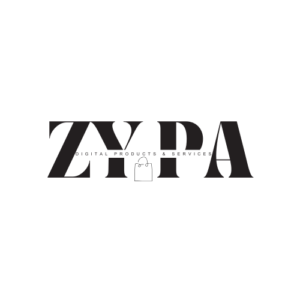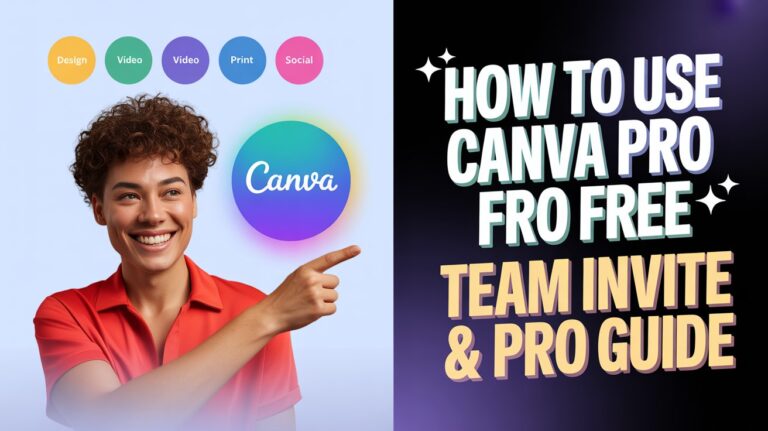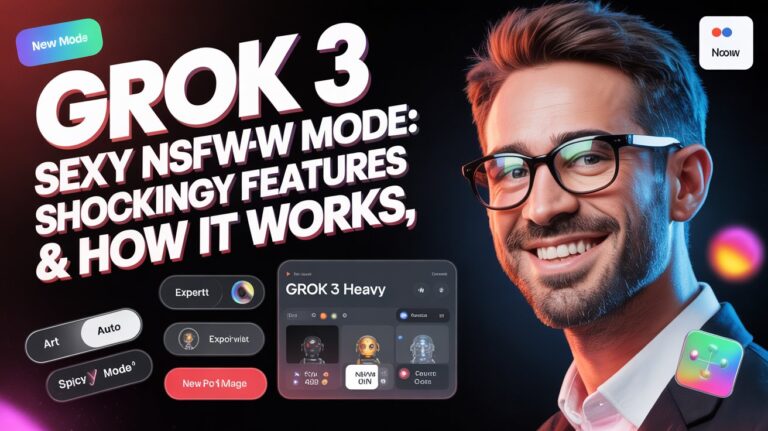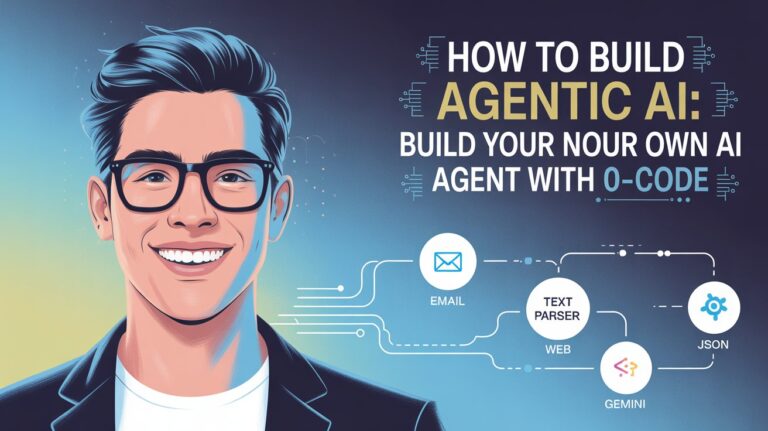Managing two distinct design domains? Creators have been dealing with a frustrating division for years. You use Canva for speed: team templates, rapid carousels, and social media postings. However, you had to use a powerful tool like affinity designer for “serious” work, such as a scalable logo, a complicated vector graphic, or a print-ready brochure. The process was cumbersome. There was no synergy.

The acquisition of affinity photo by Canva alters the rules. This is a 2025 analysis of all the new features resulting from the merger and what it really means for creators, marketers, and designers.
This is a full-stack integration rather than only an acquisition. We’re not discussing the past. We’re concentrating on the new 2025 features that this platform combination has produced and why it could be this year’s most significant update for “content creation software.”
A Brief Comparison of the New Platform and the Old Method
Here’s a 30-second recap of the recent events before we go into the new engine.
- Previously (The Old Way): You had Canva , a template-driven, fully cloud-based program that was adored for its ease of use. Additionally, you had affinity designer , the professional-grade vector powerhouse that prioritizes desktop use and is renowned for its unadulterated power and one-time cost. They didn’t exchange words.
We now have a single, cohesive platform (canva affinity 2025). It combines Canva’s straightforward, collaborative, cloud-first architecture with affinity‘s potent vector engine. The competition is already having to work hard since it’s the best of both worlds.

1. A Unified Design Core → The “Chroma” Engine
The engine is the largest upgrade, not a single button. To manage everything, the new “Chroma Engine” is constructed from the ground up. It combines Canva’s real-time cloud rendering with affinity‘s high-performance vector processing.
For you, what does this mean?
When editing a 500MB vector file with 10,000 layers, there is no longer any lag. No issue. Cloud-based heavy lifting seems instantaneous since the engine smartly transmits only the sections you’re working on.
- Pixel-Perfect Consistency: The file you change on your robust desktop program renders identically on both your client’s phone and your teammate’s web browser.
- Future-Proof: Within a single project file, this new engine can handle developing formats, such as interactive web elements and 3D materials.
This is one of the best design tools of 2025 since it truly is a “one file, any context” solution.
The lesson is that more time for innovation results from a speedier engine. Top creators are aware that lowering friction can increase the consistency of your content output, which is essential for growing your audience.
2. The Cloud and True Offline Editing
Professional designers’ top request was this. Although Canva was excellent, many people found its “online-only” nature to be a deal-breaker.
This is permanently resolved with the new canva affinity desktop application (for Mac and Windows).
- 🚀 You get access to all of affinity designer‘s powerful features, including its ability to operate entirely offline.
- 📌 A new “Delta-Sync” feature uploads only the changes you made, not the complete file, as soon as you reconnect to the internet.
- 🎯 This hybrid model combines the backup and teamwork of the cloud with the dependability of a conventional desktop application.
On a six-hour journey with no internet, a social media creator can create a month’s worth of intricate, vector-based Instagram posts. Before they even reach baggage claim, the app synchronizes all thirty postings to their team’s shared “Content Calendar” in Canva.
This action establishes the new platform as a true “productivity software review” choice for remote teams and digital nomads.
Also Read: Nano Banana for Creators: Ultimate Content Creation Tool

3. The “Persona” Combination → Raster and Vector in a Single Workspace
Creating a vector logo in Affinity, exporting it as a PNG, importing it into Canva, and then placing it on a raster background was the tedious old process. You had to start anew if the logo needed to be changed.
No more. With a Canva twist, the new unified workspace uses affinity‘s well-known “Persona” switching.
With all the potent pen tools, form builders, and non-destructive booleans you would expect, Vector Persona is the default mode.
- Raster Persona: The user interface immediately converts to pixel-based tools upon clicking a button. You can paint with digital brushes, apply healing brushes, or add realistic textures—on the same canvas as your vector art.
- Template Persona: This is the magic of Canva. All of your brand kits, templates, and stock assets are available for drag-and-drop into your canvas when a third “persona” opens a side panel.
Practical Example: Without ever leaving the app, a logo designer can build a sharp vector mark (Vector Persona), quickly switch to add a realistic, gritty texture to a mockup (Raster Persona), and then drag in the client’s preferred color scheme (Template Persona).
[Image Placeholder: The new unified workspace’s screenshot. It displays a vector logo being altered with the Canva “Templates” panel open on the left and a pixel-based texture brush selected.]
The conflict between vector and raster is eventually resolved by this hybrid “graphic design software tool.”
Conclusion: Do you want to grow your audience? You can produce better material more quickly with this technology. In just a few seconds, you can give a basic design a unique, upscale vibe that will make your business stand out.
4. Collaboration in Real Time and Version Control (Lastly)
Canva’s “affinity” for collaboration really comes through in this situation. The “save-as” and “export” collaboration features used by affinity are no longer available.
The new system is an ideal hybrid:
- Canva-Style Sharing: Send a customer a link so they may comment directly on your high-fidelity vector artboard. Exports are not required.
- Figma-Style Collaboration: You and your art director can work together in the same file at the same time to change copy or move vector points.
For professionals, the most important feature is Git-Style Version Control. You can view a branch-based version history with the new “Project History” panel. With 100% safety, you can “commit” a version, investigate a different design path, then roll back or merge changes.
A marketing team for a multinational company might concentrate on a fresh advertising campaign. Real-time edits are made to the text by the copywriter using the web app, the vector graphics by the designer using the desktop software, and the final version is approved by the marketing manager using their tablet.
This type of “business growth software” enhances the entire marketing process, not simply the design.

5. AI Improvements, Speed, and Performance
With comprehensive optimization for NVIDIA’s RTX graphics cards and Apple’s M-series CPUs, the new Chroma Engine is incredibly fast. Complex effects render in real-time, and zooms happen instantly.
However, the integration of new AI tools for business is the main story.
- AI Vector-Tracer: At last, it works well. The new AI engine converts a low-resolution JPG into a multi-layer vector file that is clean and editable in a matter of seconds.
Apply the “look” of one vector illustration to another using AI Style Transfer. - AI-Powered “Quick-Mask”: The AI can now recognize and choose subjects, backgrounds, or even text within a raster or vector image in real time.
affinity truly feels like Adobe’s first true rival, but with Canva’s ease of use because to its unadulterated speed and clever automation.
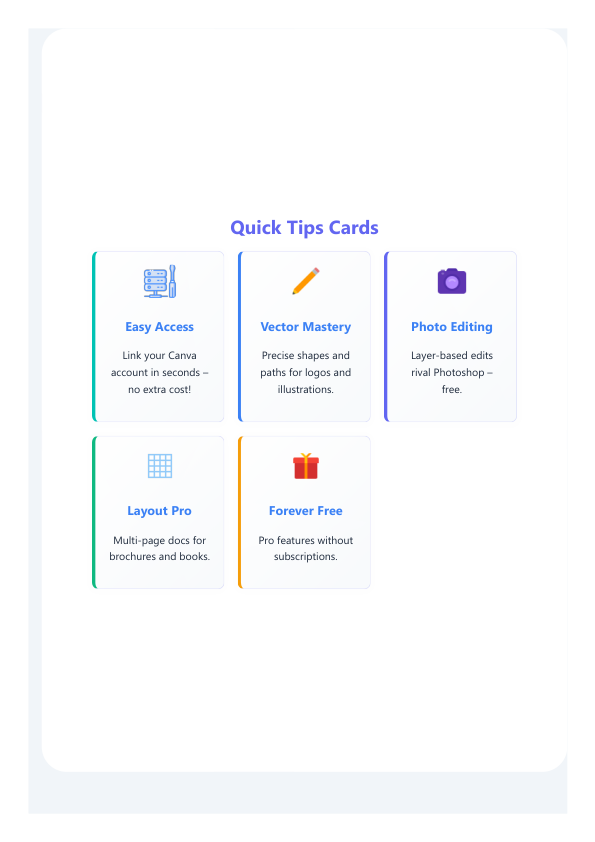
The 2025 Workspace → Before and After
The new user interface is simple, quick, and recognizable. It combines Canva’s user-friendly sidebar with the best features of affinity‘s pro-focused layout.
Also Read: How to Get Canva Pro for Free: Team Invite & Pro Guide
Canva’s Affinity Photo VS Adobe Photoshop
Here’s a clear, no-nonsense comparison table between Affinity Photo 2 and Adobe Photoshop, so you can judge which fits you better.
| Feature | Canva’s Affinity Photo | Adobe Photoshop |
|---|---|---|
| Pricing | One-time | Subscription |
| Ease of Use | Simple | Complex |
| Speed | Fast | Moderate |
| AI Tools | Limited | Advanced |
| Plugins | Few | Extensive |
| Performance | Lightweight | Heavy |
| RAW Support | Yes | Yes |
| 3D / Automation | Basic | Strong |
| File Compatibility | PSD Supported | Native PSD |
| Learning Curve | Easy | Steep |
| Integration | Standalone | Adobe Suite |
| Best For | Creators, freelancers | Professionals, studios |
How to Download & Use Affinity Designer
- Go to the Affinity Photo website or your platform’s app store.
- Click on Sign Up To Download button → Sign Up With your Canva Account.
- Choose your OS (Windows / MacOS)→ download installer.
- Run installer → follow prompts → launch Affinity Photo.
- First launch: skip welcome or view quick tour. Create or sign in to Serif account if asked.
- Open image:
File > Open(or drag & drop). - Basic edits: Crop tool → Adjustments (Levels/Curves) → Layers panel for masks/blends.
- Retouch: Healing Brush / Inpainting (spot fix).
- Export:
File > Export→ pick format (JPG/PNG/TIFF) → Export. - Save project:
File > Save As→ .afphoto (keeps layers).
OR
You can simply click the button below to download the installer and directly Skip to Step 4.
Comparing Features → The 30-Second Decision
What is the difference between the new "Canva Affinity" and the previous individual apps? This is a brief explanation.
| Feature | Old Canva | Canva Affinity (2025) |
|---|---|---|
| Primary Use | Templates, Social Media | Unified Pro Design |
| Vector Tools | Basic | Industry-Leading |
| Collaboration | Outstanding | Best-in-Class |
| Offline Mode | No | Yes (Hybrid Sync) |
| Raster Editing | Basic (Filters) | Excellent (Unified) |
| Pricing Model | Subscription | Subscription (Included with Canva Pro) |
| Target Users | Pro Illustrators, Freelancers, Marketers, Non-Designers | Everyone (From Creators to Agencies) |
Workflow Improvements for Creators → Quick Advice
Here's a "flashcard" with some fresh tips.
Canva Affinity: New 2025 Workflows
- 🚀 You can drag your Canva Brand Kit logo straight onto a vector artboard. It remains a vector.
- 📌 Round-trip editing involves starting a design online, opening it offline on your PC, adding intricate vector effects, then having it sync back to the web for your team to view.
- "Make this blue" is the comment made by a client in this style ("padding-left: 10px"). The update is suggested by a new AI feature. Simply click "Approve."
- 🎯 Your team now has a single collection for *both* Canva templates and intricate affinity vector assets.
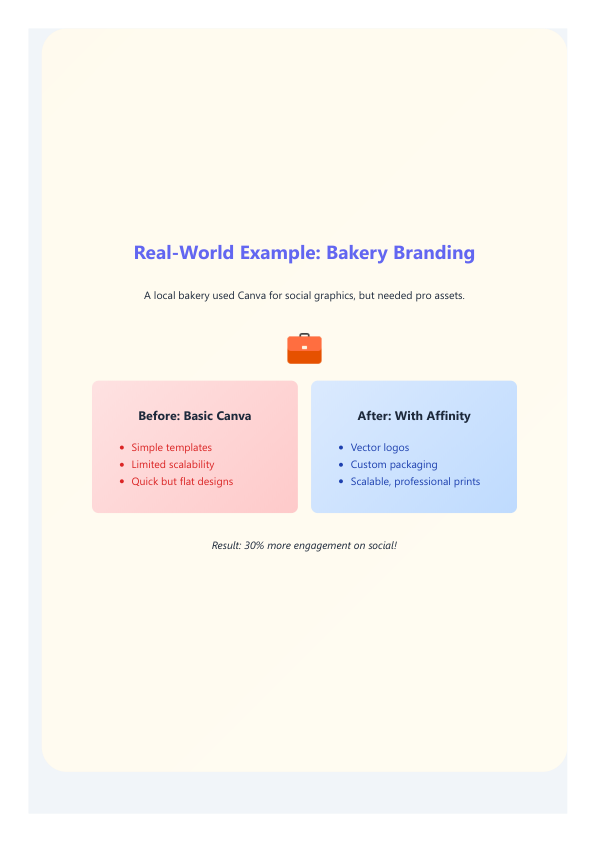
Our Opinion → 2025's Top 5 Upgrades
Here's a brief synopsis if you're scrolling. What really counts is this.
Canva Affinity's Top 5 Upgrades (2025)
- 🚀 The Hybrid Cloud offers complete offline desktop power that seamlessly integrates with the cloud.
- Unified Vector/Raster: There's no need to jump between programs to modify vectors and pixels. Everything is contained in a single "Persona."
- True Real-Time Collaboration: Clients and team members can edit and comment on high-fidelity vector files from any device.
- 📌 Git-style version control is a professional, non-destructive history that allows you to experiment without worry.
- 🎯 The "Chroma" Engine is a lightning-fast new core that makes cloud-based design seem responsive and instantaneous.
Also Read: Grok Imagine Spicy Mode Explained: 13 Wild Prompts to Try
How This Affects Your Creator Company
This platform merger represents a major change in the "online business tools" scene for creators rather than merely a technological update.
We've discussed a "creator stack"—one tool for writing, one for design, and one for video—for years. The brand-new canva affinity photo platform is a "creator suite."
It enables you to sell digital templates online that are both aesthetically pleasing (Canva-style) and technically sound (affinity-style). Your website, social media postings, YouTube thumbnails, and purchased digital goods will all be designed using this tool.
This change directly helps the growth tactics that great artists employ:
- Be More Human: As suggested by Google's creator guides, demonstrating your human side through the use of video fosters connection. You'll have more time to participate in comments or record a behind-the-scenes movie if you spend less time battling cumbersome equipment.
- Establish Authority: Do you want to appear in a large publication? Your images must have a polished appearance. By bridging the gap, this tool enables you to produce sophisticated visualizations that establish authority and trust.
- Build Community: Internal teams aren't the only ones using the new collaborative tools. Make use of them to obtain direct feedback from your viewers. In a private community, post a "read-only" link to your next design and get feedback. This is the pinnacle of crowd participation.
You may save time, money, and creative energy by replacing at least three other apps in your stack of "digital marketing automation tools" with just one platform. It enables you to concentrate on what really counts, which is producing worthwhile material and developing a rapport with your audience—particularly those from the US, who need polished, high-quality content.
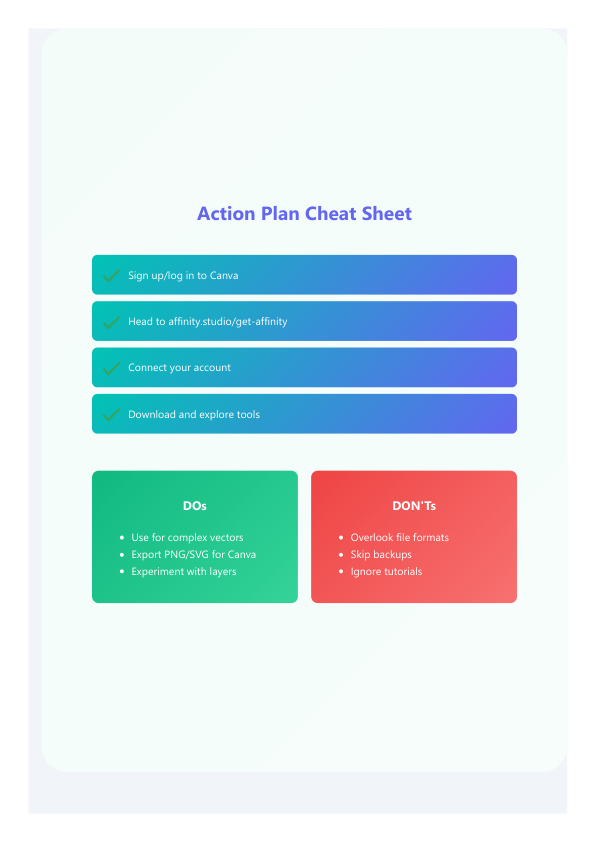
Conclusion → Does Affinity Designer Make Sense?
The distinction between "powerful" and "easy" has officially vanished.
The collaboration and cloud-sync you've been longing for are now available to professional designers who had a "affinity" for the previous desktop application. This offers a smooth upgrade path to professional-grade tools without the steep learning curve for the millions of creators who grew up on Canva. Canva's affinity Designer is more than a novel product. It's the new norm.
What are your thoughts? Is this the long-awaited Adobe killer? Which feature is most likely to alter your workflow? Tell us in the comments section below! 🚀
